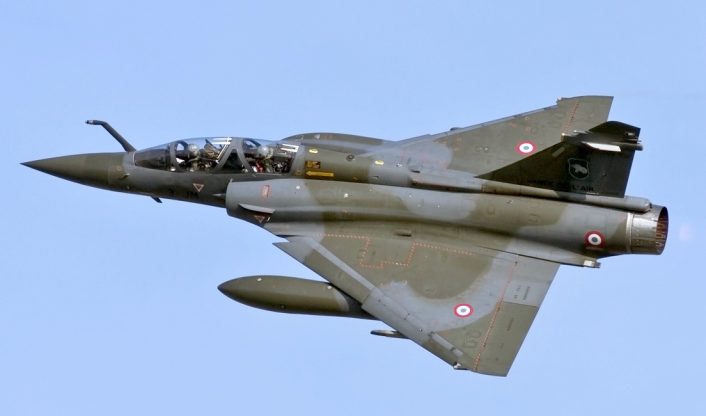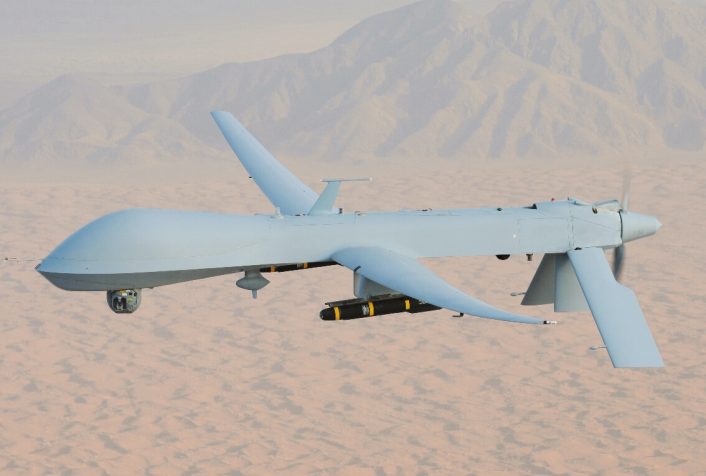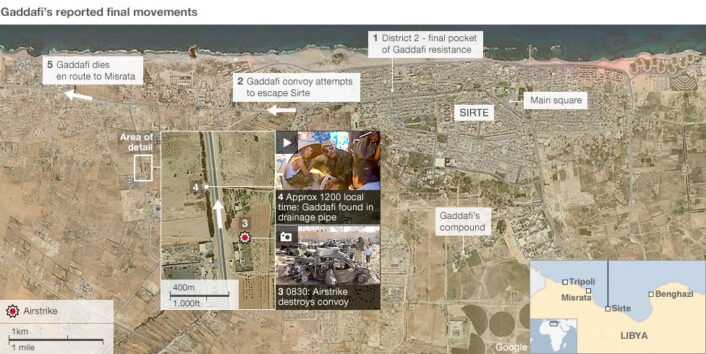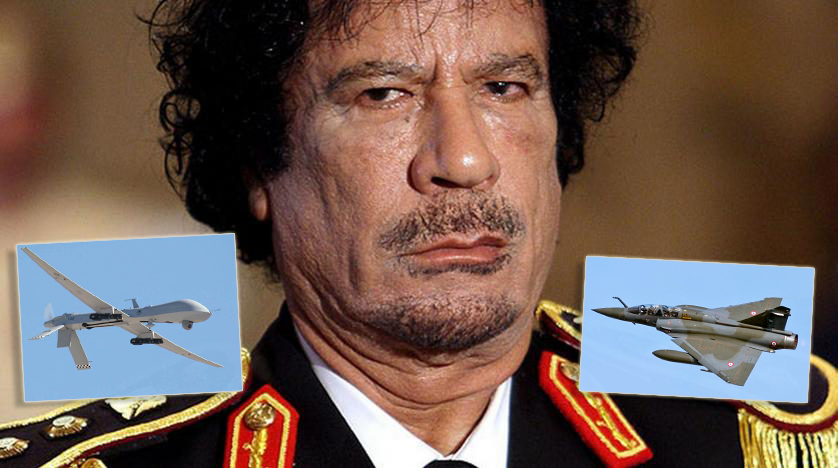On this day in 2011, an air strike by NATO aircraft contributed to the capture of Col. Gaddafi. Here’s how it went.
Although NATO’s Operation Unified Protector, as the multinational air campaign in Libya was officially named, ended on Oct. 31, 2011, the Air War in northern Africa came to a virtual end a couple of weeks earlier, on Oct. 20, when the killing of Muammar Gaddafi marked the completion of the air campaign that had started on Mar. 19, 2011.
Gaddafi and his family had escaped Tripoli when Libyan capital had fallen to forces of the opposition NTC (National Transitional Council) in August 2011. Since then, Libya’s formed leader was believed to be hidden and protected by several heavily armed loyalists in Sirte, east of Tripoli. Since attempts to convince him to flee the country and give up power were ignored, when the last loyalist district fell to the NTC forces, Gaddafi, his family and inner circle members attempted to flee Sirte on a large convoy made of around 75 vehicles.
The convoy was attacked at 08.30AM LT on Oct. 20, 2011, by a French Mirage 2000D that was called into action by an RAF E-3D AWACS. Gaddafi’s vehicle was intercepted by rebel fighters on the ground and he was killed (after being wounded) as he was being transferred.

Most probably, his decision to escape using such a large convoy was his last mistake. It’s hard to understand how a convoy made of so many vehicles could move unnoticed from the many reconnaissance and intelligence gathering platforms still flying over Libya. Even if almost all the NATO and non-NATO contingents taking part to Unified Protector had been reduced the number of SIGINT (Signal Intelligence) assets had remained almost the same.
It was one of these extremely important platforms, for instance, to intercept a phone call made by Gaddafi in the days preceding the air strike on Sirte.
Even though the bombs dropped by the French combat jet didn’t destroy the whole convoy (as just two armed vehicles and several accompanying cars were damaged or destroyed), they were decisive to halt it.
Later on Oct. 20, the Pentagon disclosed that a US Predator took part in the attack, firing its Hellfire missiles. Here’s how the operation unfolded.
The air strike on the convoy
A Predator (Note: according to other sources it was an RAF Tornado GR4 on a recce mission) monitoring Sirte movements spotted a convoy fleeing the city. The convoy, identified as being pro-Gaddafi, was attempting to force its way around the outskirts of the city. Since the vehicles had some mounted weapons and ammunitions, the US drone attacked it with Hellfire missiles.

As a result of the first attack, only one vehicle was destroyed but many others dispersed in different directions. Shortly after the disruption, about 20 vehicles regrouped and tried to proceed in a southerly direction. NATO again decided to engage these vehicles. Orbiting nearby there was a mixed flight of a Mirage F1CR and a Mirage 2000D that were immediately directed to strike the target. The Mirage 2000D dropped a GBU-12 on the convoy, destroying 11 vehicles.
According to the official statement issued by NATO, at the time of the strike, NATO did not know that Gaddafi was in the convoy and “NATO’s intervention was conducted solely to reduce the threat towards the civilian population, as required to do under our UN mandate. As a matter of policy, NATO does not target individuals.”
As a policy NATO does not divulge specific information on national assets involved in operations. However, as the above text shows, some commanders were more than happy to let the details about their service’s involvement in the “decisive strike” leak.
What happened after the air strike strike has never been completely clarified and there are several different versions. What is certain is that Gaddafi was captured along with some of his guardsmen and shot in his head and abdomen.
Several videos related to the assassination were broadcast by news channels and circulated via the Internet.

By the way, as some of you will probably remember since we have published an article on this earlier this year, The Aviationist, provided a constant coverage of the crisis that led to launch of the air campaign. From Mar. 19, 2011 to the end of the war, this site provided daily reports that not only were a reference for aviation enthusiasts and other journalists, but also for the officers involved in the air campaign. “For a daily account of operations, one of the best open sources throughout the war was Italian journalist David Cenciotti’s weblog The Aviationist”, said the Rand Corporation’s report “Precision and purpose: airpower in the Libyan Civil War” published in 2015. The whole archive of daily debriefs, you can click here. For the final report, you can read here.









